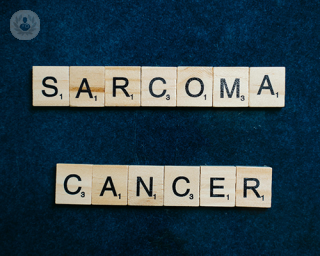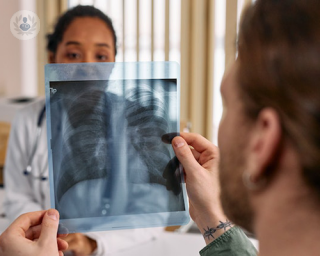What is sarcoma?
Sarcoma is a unique form of cancer that originates in the body's connective tissues, encompassing a wide array of crucial components such as fat, blood vessels, nerves, bones, muscles, deep skin tissues, and even cartilage. While it predominantly affects the limbs, including both the upper and lower extremities, it's important to recognise that sarcoma's reach extends beyond these areas. This cancer has the unsettling ability to emerge in diverse anatomical locations throughout the body.
Apart from the arms and legs, sarcoma can also take root in the abdominal region, which includes the stomach and intestines. The presence of sarcoma in these areas can be particularly challenging for diagnosis and treatment due to its proximity to vital organs. Moreover, this malignancy can hide behind the protective barrier of the abdomen, making early detection a complex endeavour. Additionally, sarcoma has been known to infiltrate the female reproductive system, introducing further complexities to its manifestations.

What are the different types of sarcoma?
There are three main types of sarcoma:
- Soft tissue sarcoma – which develops in the supporting or connective tissue, such as the muscle, nerves, tendons, blood vessels and fibrous tissues.
- Bone sarcoma – cancer that starts in the bone, which affects the legs most commonly.
- Gastrointestinal stromal tumours (GIST) – develops in the gastrointestinal tract, which is a long tube that runs from the oesophagus to the anus, and includes the stomach and intestines. Most incidences of GISTs occur in the stomach and small bowel.
What are the symptoms of sarcoma?
In cases of soft tissue sarcoma, there are often no symptoms in the early stages. When symptoms do appear, they may include a noticeable lump or swelling that is usually painless.
Bone sarcoma may be painful with or without a lump and it affects the long bones in the arm or the leg or pelvis. There may be blood in the stool or the stools will have a black, tarry appearance in cases of tumours in the gastrointestinal system.
How is sarcoma diagnosed?
If you notice a lump that is getting bigger you should visit your doctor. The doctor will conduct a medical examination. Imaging tests such as X-ray, ultrasound, a CAT scan or MRI will be required. A biopsy, which is the removal of a small amount of tissue for examination under a microscope, will confirm whether it is cancer.
What are the treatment options for sarcoma?
The treatment that you will need will depend on the stage and grade of cancer and the type of sarcoma that you have. Surgery is usually the first method used to treat sarcoma and the surgeon will remove the tumour. They will also remove an area of normal tissue surrounding the tumour too to reduce the risk of cancer coming back. In some cases, additional radiotherapy or chemotherapy is required.
10-29-2013 10-09-2023Sarcoma
Professor James McCaul - Oral & maxillofacial surgery
Created on: 10-29-2013
Updated on: 10-09-2023
Edited by: Kate Forristal
What is sarcoma?
Sarcoma is a unique form of cancer that originates in the body's connective tissues, encompassing a wide array of crucial components such as fat, blood vessels, nerves, bones, muscles, deep skin tissues, and even cartilage. While it predominantly affects the limbs, including both the upper and lower extremities, it's important to recognise that sarcoma's reach extends beyond these areas. This cancer has the unsettling ability to emerge in diverse anatomical locations throughout the body.
Apart from the arms and legs, sarcoma can also take root in the abdominal region, which includes the stomach and intestines. The presence of sarcoma in these areas can be particularly challenging for diagnosis and treatment due to its proximity to vital organs. Moreover, this malignancy can hide behind the protective barrier of the abdomen, making early detection a complex endeavour. Additionally, sarcoma has been known to infiltrate the female reproductive system, introducing further complexities to its manifestations.

What are the different types of sarcoma?
There are three main types of sarcoma:
- Soft tissue sarcoma – which develops in the supporting or connective tissue, such as the muscle, nerves, tendons, blood vessels and fibrous tissues.
- Bone sarcoma – cancer that starts in the bone, which affects the legs most commonly.
- Gastrointestinal stromal tumours (GIST) – develops in the gastrointestinal tract, which is a long tube that runs from the oesophagus to the anus, and includes the stomach and intestines. Most incidences of GISTs occur in the stomach and small bowel.
What are the symptoms of sarcoma?
In cases of soft tissue sarcoma, there are often no symptoms in the early stages. When symptoms do appear, they may include a noticeable lump or swelling that is usually painless.
Bone sarcoma may be painful with or without a lump and it affects the long bones in the arm or the leg or pelvis. There may be blood in the stool or the stools will have a black, tarry appearance in cases of tumours in the gastrointestinal system.
How is sarcoma diagnosed?
If you notice a lump that is getting bigger you should visit your doctor. The doctor will conduct a medical examination. Imaging tests such as X-ray, ultrasound, a CAT scan or MRI will be required. A biopsy, which is the removal of a small amount of tissue for examination under a microscope, will confirm whether it is cancer.
What are the treatment options for sarcoma?
The treatment that you will need will depend on the stage and grade of cancer and the type of sarcoma that you have. Surgery is usually the first method used to treat sarcoma and the surgeon will remove the tumour. They will also remove an area of normal tissue surrounding the tumour too to reduce the risk of cancer coming back. In some cases, additional radiotherapy or chemotherapy is required.


Sarcoma: Early detection, diagnosis, and care
By Mr Robin Pollock
2024-11-18
Sarcoma is a complex disease, but early diagnosis, effective treatment, and long-term follow-up care can help to improve outcomes. Here, Mr Robin Pollock, renowned consultant orthopaedic surgeon, provides an expert insight into sarcoma, including what it is, how it is diagnosed, and what can be expected in terms of treatment and follow-up care. See more


Sarcoma: Expert insight on the key signs to look out for
By Mr Thomas Bragg
2024-11-11
Highly respected consultant plastic surgeon Mr Thomas Bragg gives an expert guide to the diagnosis and management of sarcoma in this informative article. See more
Experts in Sarcoma
-
Mr Duncan Whitwell
Orthopaedic surgeryExpert in:
- Bone cancer
- Sarcoma
- Revision hip replacement
- Revision knee replacement
- Knee replacement
- Hip replacement
-
Mr Radu Mihai
SurgeryExpert in:
- Sarcoma
- Adrenal gland surgery
- Parathyroid gland surgery
- Thyroid surgery
- Medicolegal
- Gallstones
-
Mr Hanny Anwar
Orthopaedic surgeryExpert in:
- Minimally invasive spinal surgery
- Spinal cancer
- Scoliosis
- Sciatica
- Sarcoma
- Slipped disc
-
Mr Arjun Shankar
SurgeryExpert in:
- Gastrointestinal endoscopy
- Sarcoma
- Pancreatitis
- Hernia
- Abdominal wall reconstruction
- Gallbladder surgery
-
Mr Robin Pollock
Orthopaedic surgeryExpert in:
- Arthritis
- Knee arthroscopy
- Robotic surgery
- Patellofemoral disorders
- Revision knee replacement
- Sarcoma
- See all

Platinum Medical Centre (HCA)
Platinum Medical Centre (HCA)
15 - 17 Lodge Road
No existe teléfono en el centro.
By using the telephone number provided by TOP DOCTORS, you automatically agree to let us use your phone number for statistical and commercial purposes. For further information, read our Privacy Policy
Top Doctors

The Harborne Hospital - part of HCA Healthcare
The Harborne Hospital - part of HCA Healthcare
Mindelsohn Way, B15 2FQ
No existe teléfono en el centro.
By using the telephone number provided by TOP DOCTORS, you automatically agree to let us use your phone number for statistical and commercial purposes. For further information, read our Privacy Policy
Top Doctors

The Princess Grace Hospital - part of HCA Healthcare
The Princess Grace Hospital - part of HCA Healthcare
The Princess Grace Hospital, 42-52 Nottingham Pl, W1U 5NY
No existe teléfono en el centro.
By using the telephone number provided by TOP DOCTORS, you automatically agree to let us use your phone number for statistical and commercial purposes. For further information, read our Privacy Policy
Top Doctors
-
Platinum Medical Centre (HCA)
15 - 17 Lodge Road, Central LondonExpert in:
- Digestive
- Cancer
- Orthopaedic surgery
- Diagnostic Imaging
- Spine
- Physiotherapy
-
The Harborne Hospital - part of HCA Healthcare
Mindelsohn Way, B15 2FQ, BirminghamExpert in:
- Digestive
- Cancer
- Orthopaedic surgery
- Thoracic Surgery
- Diagnostic Imaging
- Obstetrics and Gynaecology
-
The Princess Grace Hospital - part of HCA Healthcare
The Princess Grace Hospital, 42-52 Nottingham Pl, W1U 5NY, Central LondonExpert in:
- Cancer
- General Surgery
- Orthopaedic surgery
- Robotic Surgery
- Intensive care
- Sports Medicine
- See all
- Most viewed diseases, medical tests, and treatments
- CAR-T cells
- Menopause support
- Hormone therapy
- Pelvic ultrasound
- Complex endometriosis
- Maternal mental health
- Hodgkin's lymphoma
- Joint pain
- Nipple discharge
- Lumbar herniated disc








